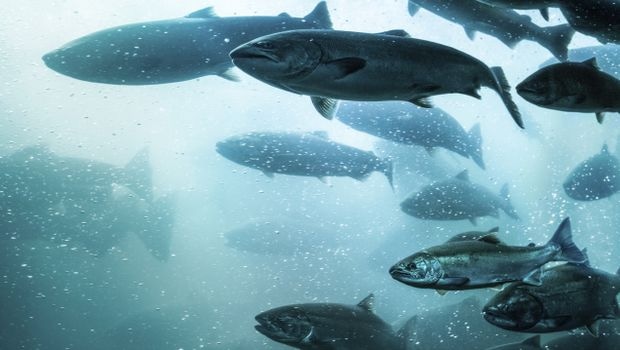Agencies Address Mercury Levels in Fish
The possibility of mercury contamination is resonating with consumers, but does the fear extend into dietary supplements?

FDA and the Environmental Protection Agency drafted an update to their current advice on fish consumption, which comes as the two regulatory bodies are trying to encourage women and children to consume more fish with lower mercury levels. Once finalized, the draft is set to replace the current advice published in 2004.
“The recent FDA guidance is good news, as it sets the record straight on the importance of fish and its omega-3 benefits for pregnant women and children," said Ellen Schutt, communications director of GOED (the Global Organization for EPA and DHA Omega-3s). “The industry is hopeful that the final guidance document will remain in line with this draft recommendation."
The Environmental Protection Agency hosted a three-day 2014 National Forum on Contaminants in Fish on September 22 to 24, 2014, in Alexandria, Virginia. During the forum, representatives from state, tribal and federal agencies, as well as representatives from industry, environmental advocacy groups, community representatives, health care organizations and academia, presented and discussed the latest on the topic of contaminated fish, including mercury levels. The forum’s presentations concluded consuming mostly salmon and other fish low on the food chain contributed to higher omega-3 percentages; however, eating from the top of the chain increases mercury content with a lower omega-3 count.
The scare of mercury contamination has caused some consumers to reduce the amount of fish in their diets. While most fish contain mercury, it’s usually a trace amount of the organic compound methylmercury, which enters the fish while it feeds. Some species of fish contain more mercury, and FDA suggests avoiding shark, swordfish, king mackerel and tilefish due to their high concentration.
A GOED news alert released June 10 stated, “[t]he guidance relies heavily on data that the benefits of omega-3 consumption outweigh the risks of mercury consumption."
Many of the more popularly consumed types of fish are fairly high in omega-3s and low in mercury. For example, 4 ounces of cooked Atlantic salmon contains up to 2,400 mg of omega-3s with only 2 µg of mercury. Assuming one eats four servings of Atlantic salmon in a week, their intake of omega-3s and mercury would not exceed 9,600 mg and 8 µg, respectively.
Limiting all fish from one’s diet can be dangerous. The draft advises individuals eat 8 to 12 ounces of fish per week, but FDA data also claims pregnant women are consuming under two ounces per week on average. This could be problematic, as the omega-3 fatty acids EPA (eicosapentaenoic acid) and DHA (docosahexaenoic acid) are essential in the development of a fetus and the production of breast milk. But the benefits of a substantial presence of omega-3s in an individual’s diet go far beyond just assisting in pregnancy.
Omega-3 fatty acids also assist in maintaining cholesterol, promoting energy and improving cardiovascular and eye health, along with other benefits. A deficiency could lead to depression, poor memory, fatigue and heart problems.
This increase in suggested fish consumption is now tantamount with the Dietary Guidelines for Americans 2010. If the finalized advice is parallel with the current Dietary Guidelines, it will have to be delayed until after the 2015 revision is published.
“We know that many consumers chose fish as part of their diet in order to boost their omega-3 index, but unfortunately, the contaminants in the fish tend to be concentrated in the otherwise healthy fat content, and one cannot remove these from a filet of fish through purification," said Sarah Christianslund, associate product marketing manager of Epax.
An alternative yet excellent source of omega-3s can be obtained from fish oil and krill oil through dietary supplements. Manufactured supplements are subject to rigorous regulations regarding purity and quality of ingredients before they can be put on the market. Even with such quality controls in place, there has been an increasing amount of negative press around fish oil and mercury contamination.
“In our view, the main challenge is that many consumers are unaware that fish oil can be—and is—purified to bring the mercury level below analytical detection limits," Christianslund said.
Many quality manufacturers have heavy-duty purification systems set up, and most distill their fish or krill oils, allowing for the safe consumption of omega-3s. Because krill is at the bottom of the food chain, their ability to accumulate heavy metals is limited; this leaves their mercury count low even before processing in a lab, according to Becky Wright, communications and marketing manager, Aker BioMarine.
Fish oil sales have dropped steadily since the market peak even though most of these supplements have shown negligible amounts of mercury. While krill oil has not experienced the same negative press as scares over fish oil, sales are still declining. GOED is leading a coalition of marine omega-3 suppliers and manufacturers to reverse the descending sales and increase consumption of the valuable nutrient.
GOED launched the independent educational website, alwaysomega3s.com, to increase consumer awareness about the benefits of omega-3s. “[The site] was commissioned by a coalition of omega-3 manufacturers as part of a campaign to change the tone of the conversation around omega-3s in the mainstream media," GOED said in a statement.
Through such campaigns and education, the dietary supplement market hopes to spread awareness on the minimal risk of mercury contamination through fish and fish-related products.
About the Author(s)
You May Also Like




.png?width=800&auto=webp&quality=80&disable=upscale)